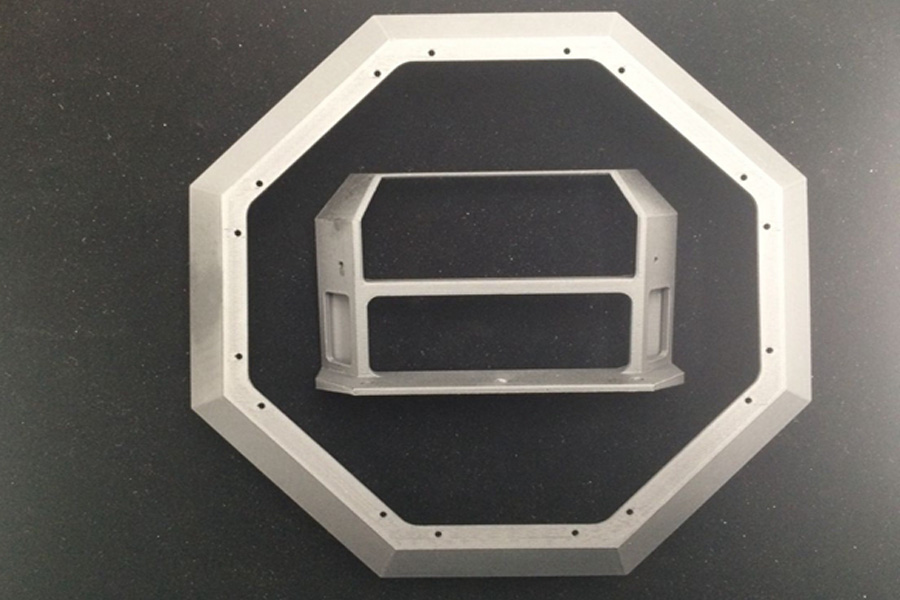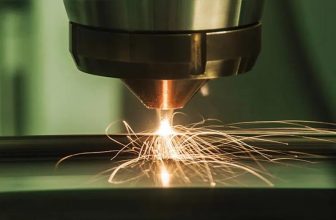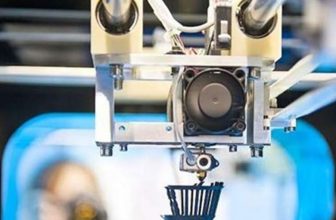
1.Material Introduction
ABS (Acrylonitrile Butadiene Styrene) is a terpolymer of acrylonitrile, butadiene and styrene. A stands for acrylonitrile, B stands for butadiene, and S stands for styrene. Acrylonitrile has high strength, thermal stability and chemical stability; butadiene has toughness and impact resistance; styrene has easy processing, high gloss and high strength.
The engineering plastic ABS, which is copolymerized by acrylonitrile, butadiene and styrene, is a kind of non-crystalline, thermoplastic polymer material structure with high strength, good toughness, high dimensional stability, and easy processing and molding. It is also called ABS resin.
The appearance of ABS is opaque and ivory-colored pellets, non-toxic, odorless, low water absorption and has a high gloss of 90%. The colors of ABS materials are ivory white, black, etc., and are widely used in different fields, such as automobiles, textiles, instrumentation, electronic appliances, and construction. It is a kind of thermoplastic engineering plastics with a wide range of uses. ABS plastic has a variety of excellent properties, such as good impact strength, better dimensional stability, heat resistance, low temperature resistance, and excellent electrical properties, abrasion resistance, and its chemical resistance is also very strong. , More suitable for forming processing and mechanical processing. ABS has a good combination with other materials, and is easy for surface printing, coating and plating treatments, such as surface metal spraying, electroplating, welding, hot pressing and bonding. Plastic ABS resin is currently one of the most widely used polymers with the largest output. It organically combines the various performance advantages of PB, PAN, and PS, and has excellent mechanical properties with a balance of toughness, rigidity and rigidity.
In addition, ABS resin can be compounded with a variety of resins to form blends, such as PC/ABS, ABS/PVC, PA/ABS, PBT/ABS blends, etc., which can produce new properties and be used in new applications. In 3D printing, ABS is a commonly used thermoplastic engineering plastic in FDM molding process.
The Performance Of ABS Materials
The performance of ABS material is mainly divided into the following aspects.
(1) General Performance.
ABS is a kind of resin with good comprehensive performance. It has higher impact strength and surface hardness in a relatively wide temperature range, heat distortion temperature is higher than PA, polyvinyl chloride (PVC), and good dimensional stability. The fluidity of ABS melt is better than PVC and PC, but worse than polyethylene (PE), PA and polystyrene (PS), and is similar to polyoxymethylene (POM) and impact-resistant polystyrene (HIPS). The flow characteristics of ABS are non-Newtonian fluids, and its melt viscosity is related to processing temperature and shear rate, but it is more sensitive to shear rate. The thixotropy of ABS is superior, which is suitable for the needs of FDM printing.
(2) Mechanical Properties.
ABS has excellent mechanical properties:
First of all, its impact strength is excellent, and it can be used at extremely low temperatures. Even if the ABS product is damaged, it can only be tensile failure and not impact failure;
Secondly, ABS has excellent wear resistance, good dimensional stability and oil resistance, so it can be used for bearings under medium loads and speeds. The creep of ABS is larger than that of polysulfone (PSF) and PC, but smaller than that of PA and POM. Among plastics, the bending strength and compressive strength of ABS are poor, and the mechanical properties are greatly affected by temperature.
(3) Thermal Performance.
ABS is an amorphous polymer, so it has no obvious melting point, high melt viscosity, poor fluidity, poor weather resistance, and ultraviolet light can change its color; heat distortion temperature is 70 C ~ 107 C (about 85 C), and its After annealing, the heat distortion temperature of the product can be increased by about 10 C. ABS is more sensitive to temperature and shear rate, and can show a certain degree of toughness at -40C, so it can be used for a long time in the range of -40C to 85C.
(4) Electrical Performance.
ABS has good electrical insulation and is almost unaffected by temperature, humidity and frequency, and can be used in most environments.
(5) Environmental Performance.
ABS is not affected by water, inorganic salts, alkali alcohols and hydrocarbon solvents and many acids, but it is soluble in ketones, aldehydes and chlorinated hydrocarbons, and will cause stress cracking when corroded by glacial acetic acid, vegetable oil, etc.
The Application Of ABS Materials In 3D Printing
ABS is the most commonly used thermoplastic for 3D printing, but it is not biodegradable. ABS’s good strength, flexibility, machinability and high temperature resistance often make it the plastic of choice for engineers. In addition, it has excellent wear resistance and impact resistance. The biggest accuracy obstacle for most ABS parts is that the printing surface directly in contact with the working substrate of the 3D printer is prone to upward curling. This requires heating the working substrate (usually 50~110C) in advance to ensure that the bottom of the model is smooth, flat and clean to eliminate curling. Phenomenon. Studies have found that using a mixture of ABS/acetone or using a hair spray gun can avoid curling on the printed surface. However, when printing larger objects, you should be careful about the warping deformation caused by thermal stress during the cooling process of the 3D model.
Other ABS Series Modified Materials That Can Be Used For 3D Printing
In order to further improve the performance of ABS materials, and make ABS materials more in line with the practical application requirements of 3D printing, people modified the existing ABS materials and developed ABS-ESD, ABSplus, ABSi and ABS-M30i which are suitable for 3D. Printed new ABS modified materials.
1.Brief Introduction Of ABS-ESD Anti-static Material.
ABS-ESD is an ideal antistatic ABS material for 3D printing developed by Staays Corporation of the United States, with a thermal deformation temperature of 90C. It is a thermoplastic engineering plastic based on ABS-M3O, with static dissipative properties, can be used to prevent static accumulation, mainly used for objects that are easily damaged by static electricity, reduce product performance or cause explosions. Because ABS-ESD prevents the accumulation of static electricity, it will not cause static vibration, nor will it cause the surface adsorption of tiny particles like powder, dust and particles. This material can be ideally used in the packaging and transportation of electronic products such as circuit boards in 3D printing, reducing the huge losses caused by static electricity every year, and reducing the occurrence of explosion accidents in ammunition devices. It is widely used in assembly fixtures and auxiliary tools for electronic components. , Consumer electronics and packaging industry.
Application of ABS-ESD materials in 3D printing:For resin materials that use FDM technology for 3D printing, the resin produces high-speed shear at the nozzle and the nozzle, which is very easy to form static electricity. Most of the resin is an insulator, and the generated static electricity cannot be released, which can easily cause the resin melt to fail. Stable flow, thereby affecting the printing effect. Therefore, it is of great significance to eliminate static electricity for 3D printing materials.
2.Brief Introduction Of ABSplus Material
ABSplus material is a special 3D printing material developed by Statasys. The hardness of ABSplus is 40% greater than that of ordinary ABS materials, making it one of the ideal rapid prototyping materials.
They used FDM technology combined with production-grade thermoplastics to create 3D printed parts, including ABSplus materials. ABSplus material is economical and affordable. Designers and engineers can work repeatedly, make prototypes frequently and test more thoroughly. At the same time, it is extremely durable, making concept models and prototypes look like the final product. Using ABSplus for 3D printing can have the widest range of colors (ivory, white, black, dark gray, red, blue, olive green, nectarine and fluorescent yellow) for selection with the aid of FDM technology, and you can also choose from Define colors to make the printing process more effective and fun. Parts 3D printed with this material have long-lasting mechanical strength and stability. In addition, because ABSplus can be used with soluble support materials, there is no need to manually remove the support, you can easily create complex shapes and deep internal cavities. Therefore, ABSplus Series is the best and easy-to-use ABS consumable. By making up for the inherent defects of ABS material that is easy to warp and crack, it can make it more suitable for 3D while retaining the original excellent mechanical properties of the material to the maximum. Print. Using ABSplus standard thermoplastics can make larger and more detailed models. Its service areas involve various industries such as aerospace, aviation, electronics, national defense, shipbuilding, medical toys, communications, and automobiles.
3.ABSi Material
ABSi is a translucent material that has the effect of car taillights. It has high heat resistance, high intensity, and amber color, which can well reflect the light source effect of car lights. The color of the material is translucent, translucent light yellow, translucent red, etc. The heat distortion temperature of the material is 86C. This material has two more characteristics than ABS: translucency and higher impact resistance. So it is named ABSi, i is impact (impact). At the same time, the strength of ABSi is higher than that of ABS, and the heat resistance is better. Absi materials can be used to make art lamps with good light transmittance and very gorgeous. It is also widely used in the automotive lighting industry, such as automotive LED lights. In addition to being used in fields such as automobile lights, ABSi can also be used in the medical industry.
ABSi materials mainly use FDM technology for 3D printing. Its products mainly include modern models, molds and parts manufacturing. In the future, it will be widely used in aerospace, home appliances, automobiles, motorcycles and other fields. It will also have a place in engineering, teaching and research fields.
4.ABS-M30i material
The color of ABS-M30i material is white, it is a kind of high-strength material, with ABS-M30’s usual characteristics, the heat distortion temperature is close to 100C. Among 3D printing materials, ABS M30i material has better stretchability, impact resistance and bending resistance than standard ABS materials. The samples made by ABS-M30i have passed biocompatibility certification (such as ISO 10993 certification), and can pass g-ray irradiation and EtO sterilization tests. It enables medical, pharmaceutical and food packaging engineers and designers to directly manufacture surgical planning models, tools and fixtures in-house through CAD data. ABS-M30i material can bring true concept models with excellent medical performance, functional prototypes, manufacturing tools and biocompatible parts of final parts through the cooperation with FORTUS 3D molding system. It is the most versatile 3D printing molding material. It has a wide range of applications in food packaging, medical equipment, oral surgery and other fields. . The use of ABSi materials and FDM technology to build semi-transparent amber, red, natural color prototype parts, semi-transparent parts can also detect fluid movement (such as in the prototype of medical equipment), create conceptual models and functional prototypes and simulate the final product. ABSi materials can also allow designers and engineers to go beyond the production of strong opaque parts.





